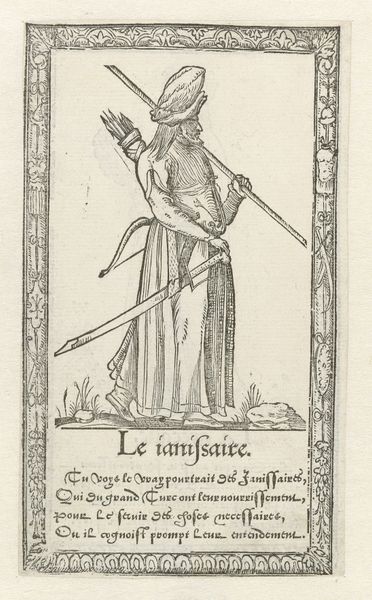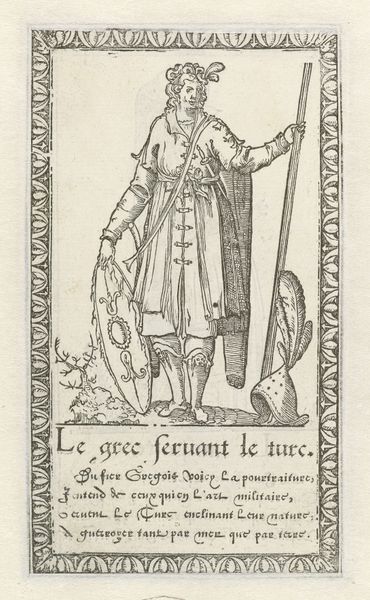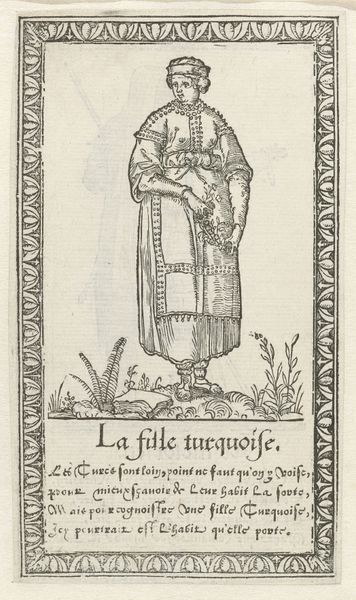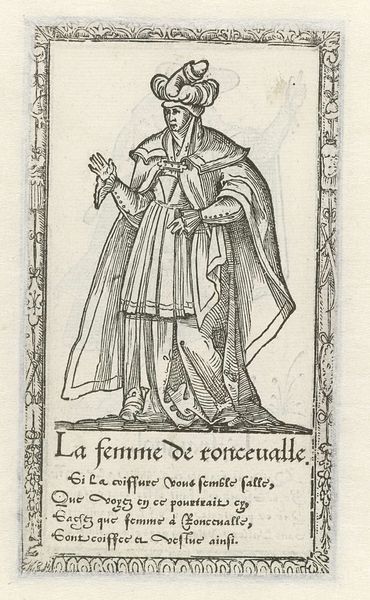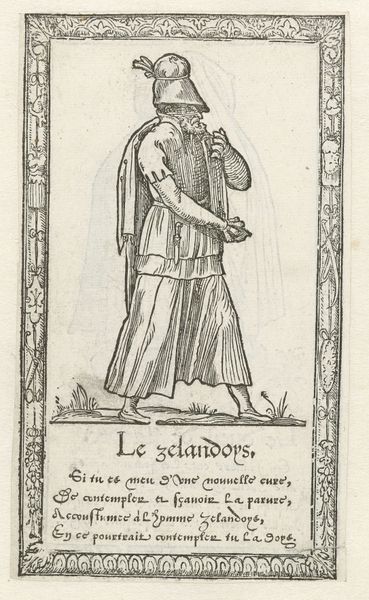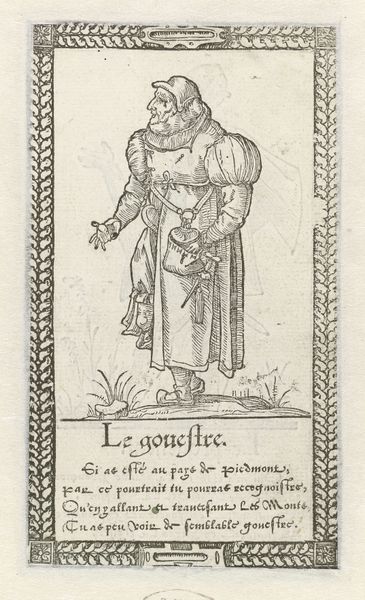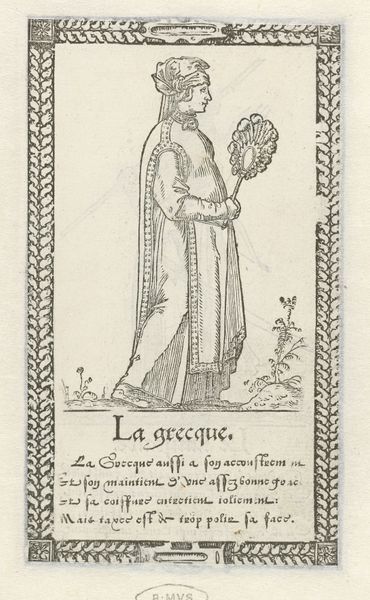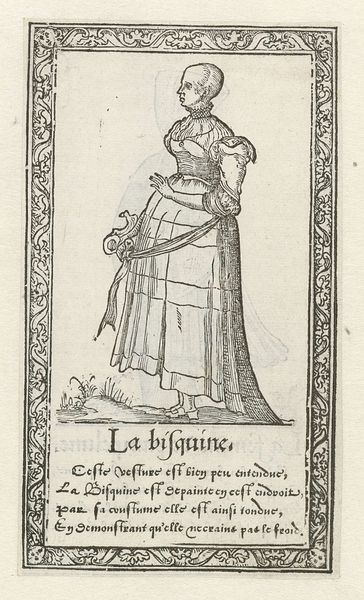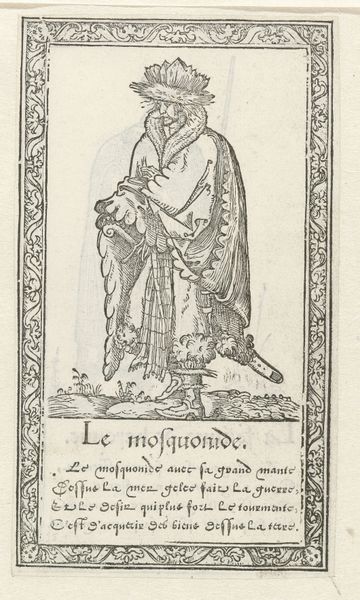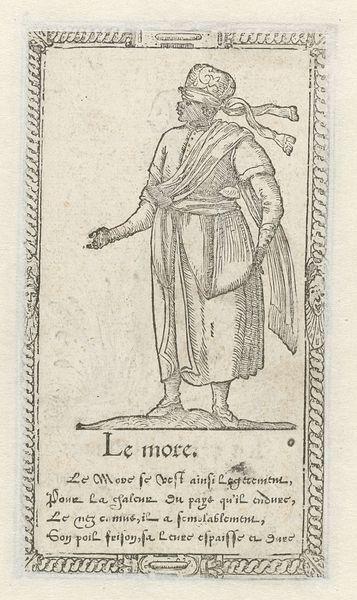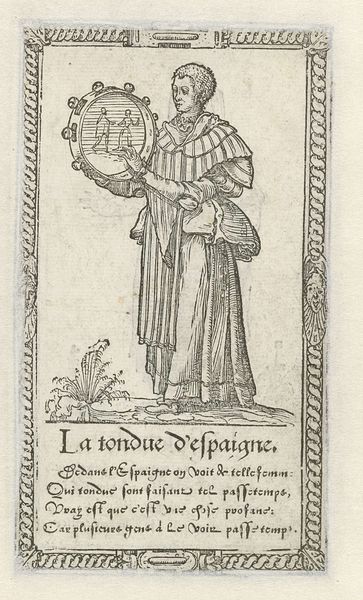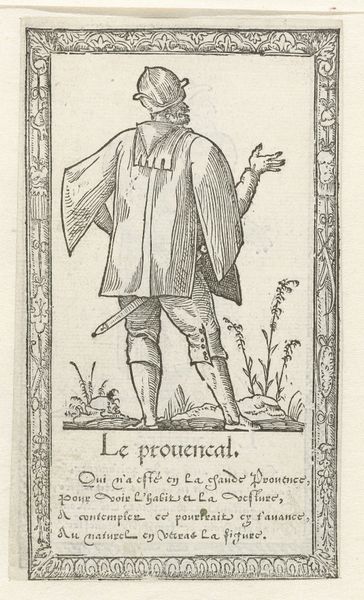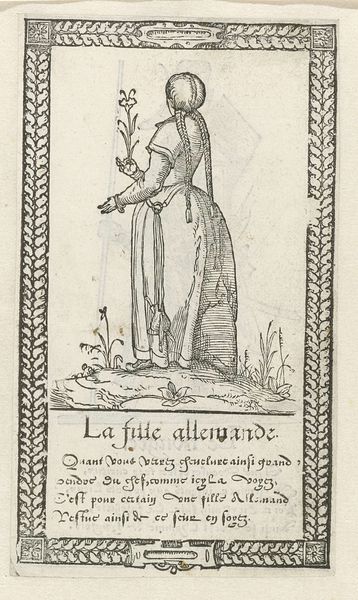
Recueil de la diversité des habits (A Collection of the Various Styles of Clothing) 1562
print, engraving
portrait
figuration
history-painting
northern-renaissance
engraving
Dimensions: height 147 mm, width 85 mm
Copyright: Rijks Museum: Open Domain
Curator: This print, made in 1562, is by François Desprez and it is titled "Recueil de la diversité des habits," or, "A Collection of the Various Styles of Clothing." Editor: It's intriguing, isn't it? At first glance, the intricate line work and the rather contained composition gives it a somewhat formal and slightly detached aura. Almost like a taxonomic illustration rather than a portrait, despite its detail. Curator: It belongs to the Northern Renaissance, when prints gained popularity as vehicles to disseminate ideas and depict different cultures. Note how "Le Turc," the Turk, is carefully rendered. It aims to provide a record, albeit a filtered one, of foreign attire. Editor: Filtered indeed. The very deliberate hatching creates volume, almost sculptural, yet simultaneously flattening the figure. See how the robe billows, how the turban balloons? It suggests presence, power even, but mediated. He’s an object on display as much as a man. Curator: Clothing functions here as a significant signifier. What we perceive as exotic would communicate cultural status and, likely, also a tinge of fear about the "Other" to 16th-century Europeans. The oversized turban speaks volumes. Editor: The figure certainly dominates the small field. Look at the frame; with it’s classicizing figurative border and repeating decorative pattern, this reinforces a sense of contained, observed knowledge. Like an early form of ethnographic study. Curator: And consider that alongside "Le Turc," Desprez presented prints of individuals from various nations. By showcasing this diversity in dress, Desprez likely hoped to instill a sense of the known world in his audience. Editor: Ultimately the stark aesthetic, typical of engraving, adds an important layer of interpretation, reinforcing the visual structure. There is beauty in those details. The texture is meticulously etched. Curator: Precisely! I appreciate your observation that these images carry substantial psychological and emotional impact for their viewers then, and, in a way, for us now as well. They echo across the ages. Editor: Yes, by applying our lens, hopefully our interpretations may continue to shift as this powerful image takes on newer significations.
Comments
This is the very first costume book, with more than a hundred images of clothing from around the world. Below each figure are four lines of verse describing the country’s outfits or related customs. This was an age of unprecedented overseas exploration. Europeans were especially fascinated to see and read about inhabitants of the so-called New World, such as the Brazilian woman with her child 1.
Join the conversation
Join millions of artists and users on Artera today and experience the ultimate creative platform.
